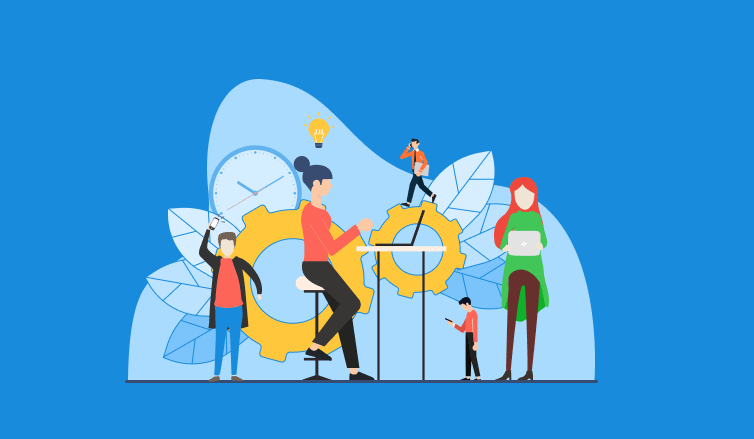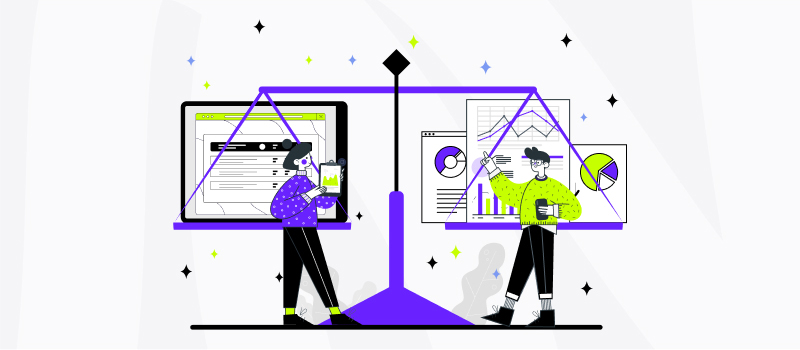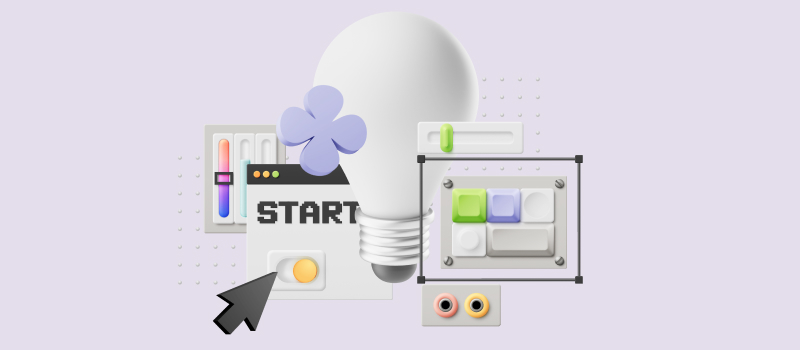Tracking employee time is a common practice, but…
According to the Time Is Money research by Harvard Business Review, even people record their work hours with a maximum accuracy of 67%. Most view tracking as a tedious and intrusive task that adds unnecessary stress to their workday.
It’s hardly surprising, as the very idea of recording every minute leaves us feeling like we are constantly under surveillance.
Time to make time-tracking fun! How about adding a bit of competition into the process?
Employee Gamification Explained
Employee gamification is the application of game-design elements and principles in a non-game context, such as the workplace, to engage and motivate employees.
It incorporates challenges, rewards, and feedback mechanisms into work-related activities to drive desired behaviors and outcomes.
So, you can use gamification to make time tracking more interactive and enjoyable, encouraging employees to actively participate in the process rather than viewing it as a chore.
TimeJam tested gamification at several of their clients. They found that workers register up to 30 more hours a month when engaged in a competition and do not leave filling and submitting their timesheets too late.
And there’s more to it!
- Gamification motivates employees by providing clear goals and rewarding achievements.
- By making work more enjoyable and interactive, gamification can help reduce stress and boredom, leading to a more positive work environment.
- Introducing elements of competition encourages people to strive for improvement and outperform their peers, driving higher performance levels.
- Gamification can be used to facilitate skill development by offering challenges and tasks that require employees to learn and apply new knowledge or techniques.
- Games and challenges can promote collaboration and teamwork, fostering a sense of camaraderie and mutual support within the organization.
- Gamification provides a platform for immediate feedback and recognition, allowing employees to see the impact of their efforts and acknowledge their accomplishments.
Want to try it firsthand?
Stop Tracking Time and Start Playing the Time-Tracking Game
To successfully implement gamification in time tracking, you need to tailor it to your preferences and work style. Below, you will find some quick tips on how to start from scratch.
- Set a goal. You need to clearly understand how you plan to improve your employee time-tracking habits. Are you seeking more precision, or do you just hate reminding them to submit their timesheets? This understanding will serve as the basis of your game.
- Design game elements like points, badges, leaderboards, levels, and challenges that you will introduce to make routine tasks more engaging and rewarding.
- Foster recognition. Provide immediate feedback to employees on their performance, progress, and achievements in the game.
- Balance competition and collaboration. Don’t overuse leaderboards and challenges. Add some collaborative gameplay to encourage teamwork and cooperation.
- Encourage participation. Offer rewards such as prizes, bonuses, extra time off, or other incentives to those who excel in the gamified activities.
Time Tracking Gamification Pre-Requisites
There are some key prerequisites thatwill help you create a rewarding experience that will motivate your team to track time more effectively.
- The right time tracking tool. Of course, paper timecards and Excel spreadsheets are out of the question. Your tracker should make logging time, setting reminders, and submitting timesheets easy.
- Access to analytics. Implementing a reward system is a key component of time-tracking gamification. Rewards can range from virtual badges and points to tangible incentives such as gift cards or merchandise. To make your reward system fair, you need to be able to access and analyze your teammates’ time tracks with minimum effort.
- Visualization. Visual representations of progress, such as charts and graphs, can help your employees see their achievements and identify weak points.
- Fun Elements. Add elements of fun to your tasks, such as using colorful post-it notes, creating a themed workspace, or listening to music while working.
- Supportive environment. Creating a supportive environment where colleagues are encouraged to track their time can significantly increase the effectiveness of your gamification plan. Support and accountability will let them stay motivated and committed to their goals.
Sounds like quite a few steps to take, doesn’t it? Actually, you can get lock, stock, and barrel in one solution.
actiTIME is a versatile tool that offers easy visualization of progress, detailed analytics, and reminders to help users manage their time effectively.
- actiTIME allows users to track time on desktop and mobile. Users can start and stop timers or manually enter time, to log hours worked.
- actiTIME provides visual representations of time spent on different tasks and projects.
- The tool offers powerful analytics and reporting features that provide insights into productivity, project timelines, and resource allocation.
- actiTIME includes reminder features to help users stay on track with their tasks and deadlines. To ensure timely completion, you can set alerts for timesheet submission deadline.
With these functionalities, your gamification plan is sure to work out.

Out-of-the-Box Time Tracking Gamification Ideas
You can try various techniques to gamify time tracking within your company effectively. These may include implementing a points-based system where employees earn points for completing tasks or hours worked. Points can be redeemed for rewards or acknowledgments, like showcasing exceptional achievements on a public platform.
Experiment with different methods to find what works best for you.
Here are four basic ideas you can use to gamify any of your work routines.
Foster competitive spirit with leaderboards
Leaderboards are a way to display and rank individuals or teams based on their performance or achievements in a particular activity or competition. They serve as a dynamic way to track high scores and achievements within a team.
By displaying rankings of users based on their time-tracking activities, leaderboards create a sense of competition and motivate users to strive for the top spot. Seeing one’s name at the top of the leaderboard can be a solid incentive to stay focused and productive throughout the day.
Moreover, leaderboards encourage transparency and accountability within teams or communities. Making time-tracking data visible to all participants makes individuals more likely to adhere to their time management goals and deadlines. Healthy competition can drive productivity and foster a culture of excellence within an organization.
Display achievements and milestones on the badges
Badges are another practical gamification element that rewards users for achieving specific milestones or demonstrating consistent time-tracking habits.
Users receive instant gratification and a sense of accomplishment by earning badges, whether physical or digital, for completing tasks on time, logging hours accurately, or reaching productivity goals.
Badges visually represent progress and achievement, motivating users to continue their time-tracking efforts. They can also act as status symbols within a community, fostering a sense of belonging and recognition among peers. By unlocking new badges, users are encouraged to explore different features of the time-tracking system and push themselves to new productivity levels.
Transform training
New skills (and time-tracking is not an exception) need to be developed.
By turning training modules into engaging learning experiences and incorporating gamification techniques such as avatars or rewards, you increase your employees’ ability to retain information, apply new skills, and stay motivated throughout the process.
One effective way to implement gamification in employee training is through scenario-based learning. By presenting employees with real-life scenarios and challenges within a simulated environment, they can practice decision-making skills, problem-solving abilities, and critical thinking under pressure.
Share the same goals
Turning goal setting into a game-like experience will give your employees a sense of accomplishment.
Think of your business goals as quests or missions in a game where completing each one takes you closer to the ultimate prize.
Break them down into smaller quests, missions, or levels and challenge your teammates to maintain a streak of working towards these goals every day. You can also offer them to partner up with someone with similar goals to hold each other accountable and motivate to stay on track.
Celebrate small wins, use progress bars, and incorporate social elements to help everyone strive for excellence while supporting one another in their pursuits.
Conclusion
Time-tracking gamification is a powerful tool that can help businesses improve their employee productivity and time management skills in a fun and stress-free way.
All you need is clear goals, user-friendly tools, a fair reward system, healthy competition, regular feedback, and a supportive environment.
Start using actiTIME today to make the first step to transforming your processes!

















































